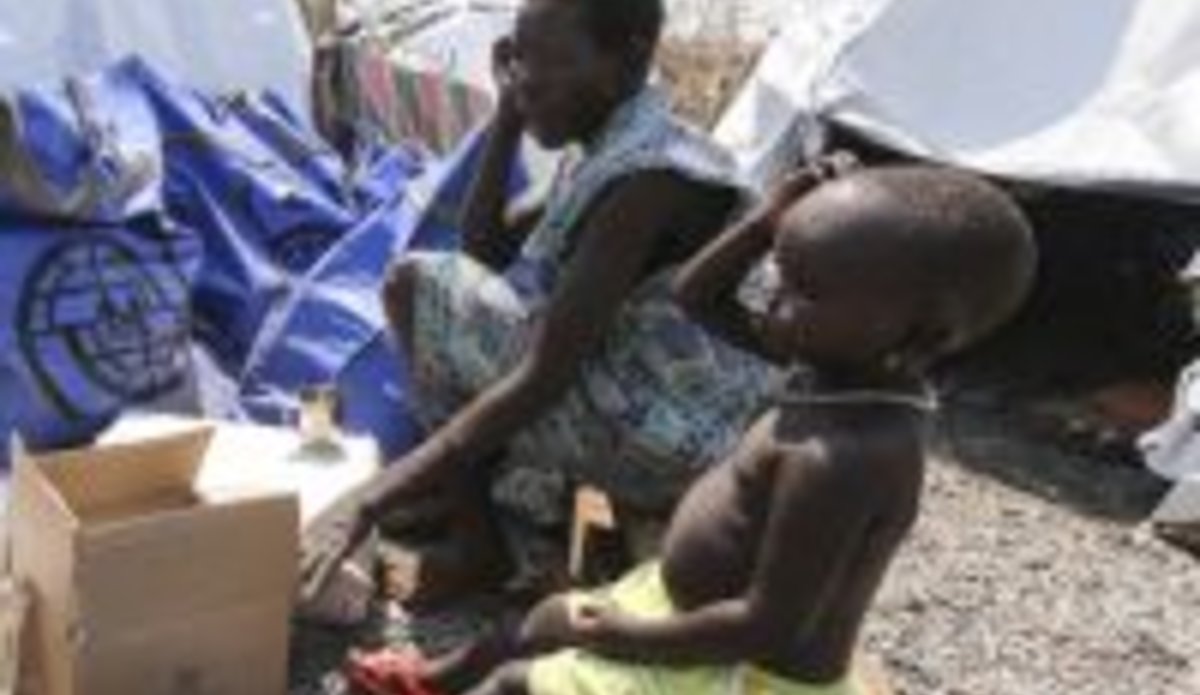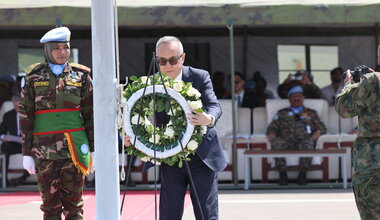Displaced South Sudanese top 400,000, UN reports
14 January 2014 - The number of South Sudanese civilians driven from their homes by ongoing conflict surpassed 400,000 over the past week, according to UN figures released today.
The new estimate, which includes 78,00 who have fled to neighbouring countries, came as UNMISS reported heavy fighting between pro- and anti-government forces in Malakal, Upper Nile State, near the UN base.
As combatants fought with heavy machine guns and tanks, stray bullets landed inside the base, wounding dozens of internally displaced persons (IDPs).
"With fighting still being reported in parts of South Sudan, mainly in the states of Jonglei and Upper Nile … we are anticipating further displacement both within and beyond the borders of South Sudan," UN refugee agency (UNHCR) Spokesperson Adrian Edwards said in Geneva.
The fighting has continued even as political talks with parties in the Ethiopian capital Addis Ababa seek to establish a ceasefire.
IDPs now number 355,000, up from 200,000 last week, with added displacement fuelled by both fighting and fear, combined with deteriorating living conditions, including a lack of food in some markets, he said. Some 65,000 IDPs have sought refuge in UN bases across the country.
UNMISS is treating dozens of wounded at its hospital there, and called on all parties to respect the integrity of UN installations.
Due to today’s fighting, the number of IDPs seeking refuge at the Malakal UN base has nearly doubled to 20,000, protected by some 1,000 UN peacekeepers, including 110 newly-arrived police.
The mission has received reports that a boat carrying a large number of civilians fleeing fighting in the area capsized on Sunday in the White Nile River between Malakal and Lelo, and is seeking to verify reports of casualties.
Many South Sudanese have fled across borders, with more than half headed for Uganda's West Nile region. "In all, 42,654 mostly women and children, from Nimule in South Sudan, are now in the Ugandan districts of Arua, Adjumani and Kiryandongo," Mr. Edwards said.
He added that many men were taking their families to the Ugandan border and leaving them there before returning back to their country.
“From the refugees we have spoken to we are hearing eye-witness accounts of killings, houses being burnt and shooting," he said.
One woman, 65-year-old Adau from the town of Bor, said she had seen people being shot.
"Houses were burning and people were being killed . . . from morning till evening people were shooting," she told UNHCR staff at the Dzaipi transit centre.
The centre was originally designed to host only 400 people but now sheltering more than 32,500, most of them sleeping in the open with their children. They complain of cold at night. "Here life is too hard," said Adau, who was staying in a communal shelter with nine family members.
"As well as shelter, they need clean water, food, and basic household goods,” Mr. Edwards said. “As more people continue to arrive daily at Dzaipi, we are working with the Ugandan authorities to set up additional camps.”
Ethiopia is also seeing an upsurge, with more than 18,600 people crossing into the Akobo area from Jonglei, and UNHCR is beefing up its staff to better help them. Nearly 6,800 people from Jonglei have fled to Kenya, many of them children.
In Sudan, available estimates are that 10,000 have crossed into West and South Kordofan, two states that are themselves volatile. "The majority are nomads and, so far, we have not been able to verify exact numbers due to lack of access," Mr. Edwards noted.
The Government of Sudan says only 1,371 of the new arrivals are South Sudanese refugees. UNHCR and the UN World Food Programme (WFP) with local partners are providing aid to these people as well as nomads who are in dire need.
 UN
UN United Nations Peacekeeping
United Nations Peacekeeping





